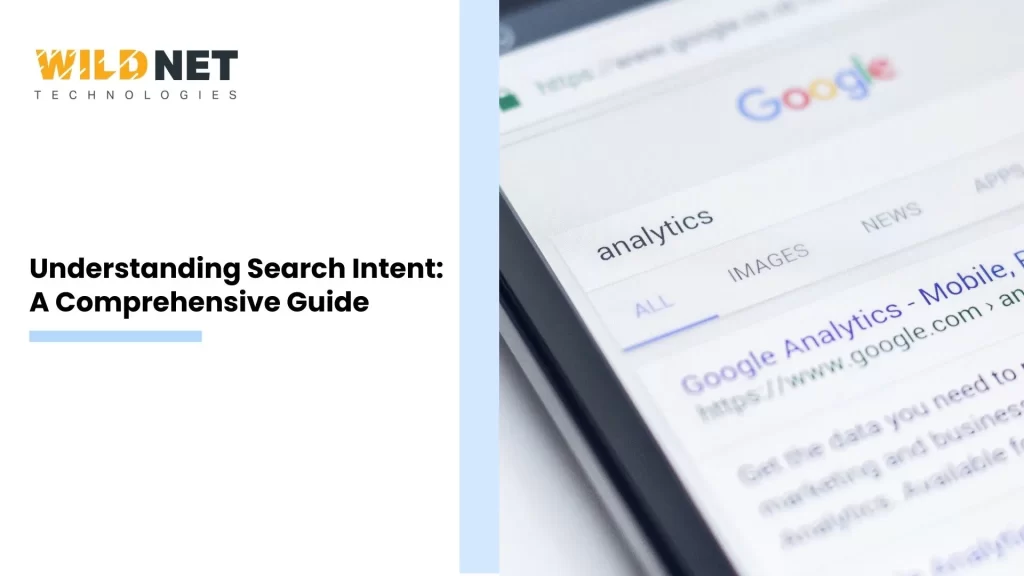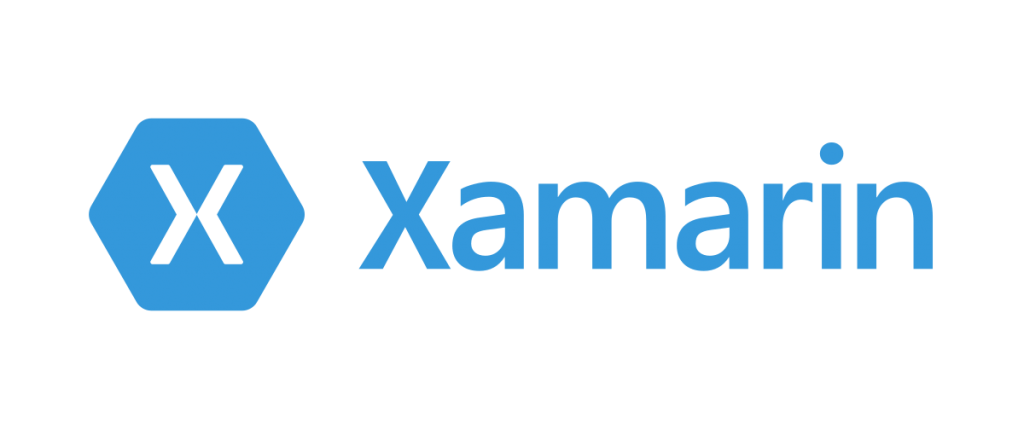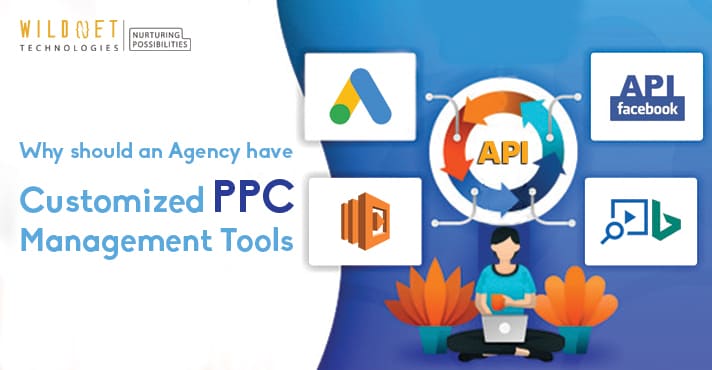What Is Search Intent and Why Does It Matter in Digital Marketing
Search intent, often called user intent, is the reason behind a user’s search query. It’s about understanding what users seek when they type a query into a search engine. This understanding is paramount because it shapes how content is created, structured, and delivered. By grasping search intent, marketers and content creators can tailor their content to meet the needs of their audience more effectively, leading to higher satisfaction and conversion rates.
In this comprehensive guide, we’ll explore search intent, its types, how to determine search intent, and some practical examples, by the end, you’ll clearly understand how to integrate search intent into your digital marketing strategy to drive better results.
Search intent is the ultimate goal that a user has when performing a search online. When someone types a query into Google, they have a specific intent: to find information, purchase, or navigate to a particular website. This intent forms the foundation of their search behavior and influences the content they find most useful.
Understanding how to determine search intent helps you create content that aligns with what your audience is searching for, thereby improving your chances of ranking higher in search engine results pages (SERPs). When content resonates with user intent, it attracts more organic traffic, enhances user experience, and fosters trust and credibility. In today’s digital landscape, where competition is fierce, aligning with search intent can be the differentiator that sets successful campaigns apart.
There Are Generally Four Main Types Of Search Intent
Recognizing these can help you categorize queries and tailor your content accordingly. Each type reflects different user needs and expectations, which should be addressed through precise content strategies.
Informational intent queries are those where the user is looking for information. This could be anything from “how to bake a cake” to “who won the World Series in 2022.” These searches are often exploratory, as users seek to educate themselves or satisfy their curiosity on a particular topic.
Informational intent is not looking to purchase anything immediately. They’re simply seeking information that answers their questions or satisfies their curiosity. This represents an opportunity for marketers to build authority and trust by providing valuable, well-researched content that meets these informational needs. Optimizing for informational intent involves creating content that is comprehensive, accessible, and easy to digest.
Navigational intent is when the user is trying to reach a specific website or page. For example, someone searching for “Facebook login” or “YouTube” demonstrates navigational intent. These queries indicate that the user already has a particular destination and uses the search engine as a shortcut.
In these cases, users already know what site they want to visit; they use the search engine to navigate there quickly. Optimizing for navigational intent involves ensuring your site is easily discoverable when users search for your brand or product names. This can be achieved through proper SEO practices, including brand-focused keywords and providing a seamless user experience once they arrive on your site.
Transactional intent is present when a user is ready to make a purchase. Queries like “buy running shoes online” or “best deals on laptops” show the user wants to buy something soon. These searches indicate a high level of commercial intent, as the user is often further along in the buying process and ready to commit financially.
These users have likely researched and are now looking to make a transaction. For marketers, providing straightforward, concise, and compelling content that facilitates the purchasing process, such as product descriptions, customer reviews, and easy-to-use checkout processes, is crucial. Addressing transactional intent effectively can significantly increase conversion rates and revenue.
Commercial investigation queries are when users want to purchase but are still in the research phase. They might be comparing products, looking for reviews, or checking out different brands. These queries indicate users who are evaluating their options before making a decision. Knowing how to determine search intent in such cases helps marketers tailor comparison content, product guides, and review pages that guide users toward conversion.
An example of a commercial investigation query might be “best smartphone 2025” or “Nike vs Adidas running shoes.” Content that caters to this intent should provide detailed comparisons, expert opinions, and user testimonials to help users make informed decisions. By assisting users in this phase, businesses can position themselves as trusted sources, potentially influencing the final purchase decision.
Determining search intent involves analyzing the keywords and understanding what the user is likely looking for. Here’s a step-by-step approach to deciphering the intent behind search queries and tailoring your content to match.
Start by looking at the keywords themselves. Words like “buy,” “price,” or “deal” often indicate transactional intent. Words like “how to,” “best,” or “guide” suggest informational or commercial investigation intent. Understanding these keyword signals can help you predict the type of content that will best satisfy user queries.
You can prioritize and strategize your content creation efforts by categorizing keywords based on intent. This lets you focus on producing content that ranks well and resonates with your audience’s needs and expectations.
Search for the keywords in question and examine the top-ranking results. Are they blog posts, product pages, or homepages? This can give you clues about what Google believes is the dominant intent. Analyzing SERP features, such as featured snippets or shopping ads, can also provide insights into how search engines interpret user intent.
By understanding the type of content that ranks well, you can tailor your content to compete more effectively. This involves matching and improving the format by offering more value or a unique perspective.
The top results indicate informational intent if they are listicles, guides, or tutorials. The purpose is likely transactional if they are product pages or service listings. Matching the content format to the user’s intent ensures your content is relevant and engaging.
Moreover, choosing the correct content format can significantly impact user engagement and satisfaction. Depending on the audience’s preferences, a video tutorial better serves an informational query than a lengthy article.
There are tools available that help analyze search intent. Tools like SEMrush, Ahrefs, and Moz can provide insights into the types of queries and the corresponding content that ranks well. These tools offer data-driven insights that can refine your understanding of search intent and guide your content creation strategies.
Utilizing such tools effectively can provide a competitive advantage, enabling you to stay ahead of trends and adapt to changing search behaviors. You can continually optimize your content by leveraging analytics to align with user intent.
Let’s look at a few examples to grasp how search intent works fully. These examples illustrate how different intents can dictate the type of content needed to satisfy user queries.
This query is straightforward. The user is looking for an apple pie recipe, which is an informational intent.
To satisfy this intent, content creators should focus on providing step-by-step instructions, tips, and a video tutorial. Including additional elements such as nutritional information or variations can enhance user engagement.
By addressing the full spectrum of potential user questions related to the query—and understanding how to determine search intent—you create a comprehensive resource that fulfills the user’s needs and encourages them to return for more information.
The user wants to purchase an iPhone 14, which is transactional intent. The ideal content would be a product page with pricing, shipping options, and a call-to-action to purchase. Including customer reviews and product comparisons can further influence the purchasing decision.
An effective strategy would also involve optimizing the page for mobile users, ensuring a seamless experience for those likely searching from their devices.
This is a commercial investigation query. The user is comparing products and is likely looking for a review or comparison article. Content should provide an unbiased comparison, pros and cons, and possibly user reviews to fulfill this intent. Visuals like side-by-side images or comparison charts can enhance understanding and retention.
By offering a balanced and informative perspective, you can establish your brand as a trusted authority, increasing the likelihood that users will choose your recommendations.
Understanding search intent is crucial for several reasons:
- Improves SEO: Content that aligns with search intent will likely rank higher in SERPs. Search engines prioritize content that provides the most relevant and satisfying answers to user queries.
- Increases Engagement: When users find content that matches their intent, they are likelier to engage with it, leading to longer session durations and lower bounce rates. Engaged users are also more likely to share content, increasing its reach and impact.
- Boosts Conversion Rates: By meeting users’ needs, you can more effectively guide them through the buying process, increasing the likelihood of conversion. Satisfied users are more inclined to trust your brand, resulting in repeat business and customer loyalty.
Grasping search intent is an integral part of any SEO strategy. By understanding how to determine search intent and catering to the different types, you can create content that not only ranks well but also meets the needs of your audience. This alignment ensures your content remains relevant and valuable in a rapidly changing digital landscape.
The key is to analyze and adapt to users’ evolving needs continuously. As search engines become more sophisticated, so must our approach to understanding and leveraging search intent. Staying attuned to these changes allows marketers to refine their strategies and maintain a competitive edge.
By mastering this aspect of SEO, you’ll be well on your way to creating a more effective and user-focused online presence. Understanding search intent is about building meaningful connections with your audience, fostering trust, and driving sustainable growth.
FAQs
1. What is search intent and why is it important in SEO?
Ans. Search intent refers to the reason behind a user’s search query—what they are trying to accomplish. Understanding search intent is crucial in SEO because it helps tailor content that matches user expectations, improving rankings, engagement, and conversion rates.
2. How can I identify the search intent of a keyword?
Ans. You can identify search intent by analyzing the wording of the keyword and checking the top results in the SERP. Keywords like “buy,” “deal,” or “discount” suggest transactional intent, while phrases like “how to” or “best ways to” typically indicate informational or commercial investigation intent.
3. What are the main types of search intent?
Ans. There are four primary types of search intent:
- Informational (looking for knowledge)
- Navigational (looking for a specific site or brand)
- Transactional (ready to make a purchase)
- Commercial Investigation (researching products/services before buying)
4. How does aligning content with search intent help my website?
Ans. When your content aligns with the user’s intent, it’s more likely to satisfy their needs. This improves engagement metrics like time on site and lowers bounce rates. It also helps your content rank better in search engines because it delivers what users seek.
5. Can tools help identify and optimize search intent?
Yes. Tools like SEMrush, Ahrefs, Moz, and Google Search Console provide data on keyword intent, SERP analysis, and content performance. These insights help refine your strategy to ensure your content targets the right audience with the right messaging.
Conclusion: Mastering Search Intent for Long-Term SEO Success
Understanding and implementing search intent in your SEO strategy is no longer optional—it’s essential. As search engines evolve, they prioritize content that aligns closely with users’ wants. Whether you’re creating blog posts, landing pages, or product descriptions, tailoring content to match intent enhances your visibility, trustworthiness, and conversion potential. To elevate your digital presence, partnering with a top-tier SEO company in India can help you create intent-driven strategies that deliver measurable results. By focusing on the user’s journey from query to conversion, you can future-proof your content and stay ahead of the competition.
Read More
Google Search Console vs Google Analytics (GA4): What’s the Real Difference?
How To Do Keyword Research For SEO?
The Future of SEO or Search Optimization Techniques: What is SXO?
Forget SEO: Use Search Experience Optimization, AEO, GEO & AIO for Full Visibility
Power Pack in Google Ads: Performance Max, AI Max for Search Campaigns & More






